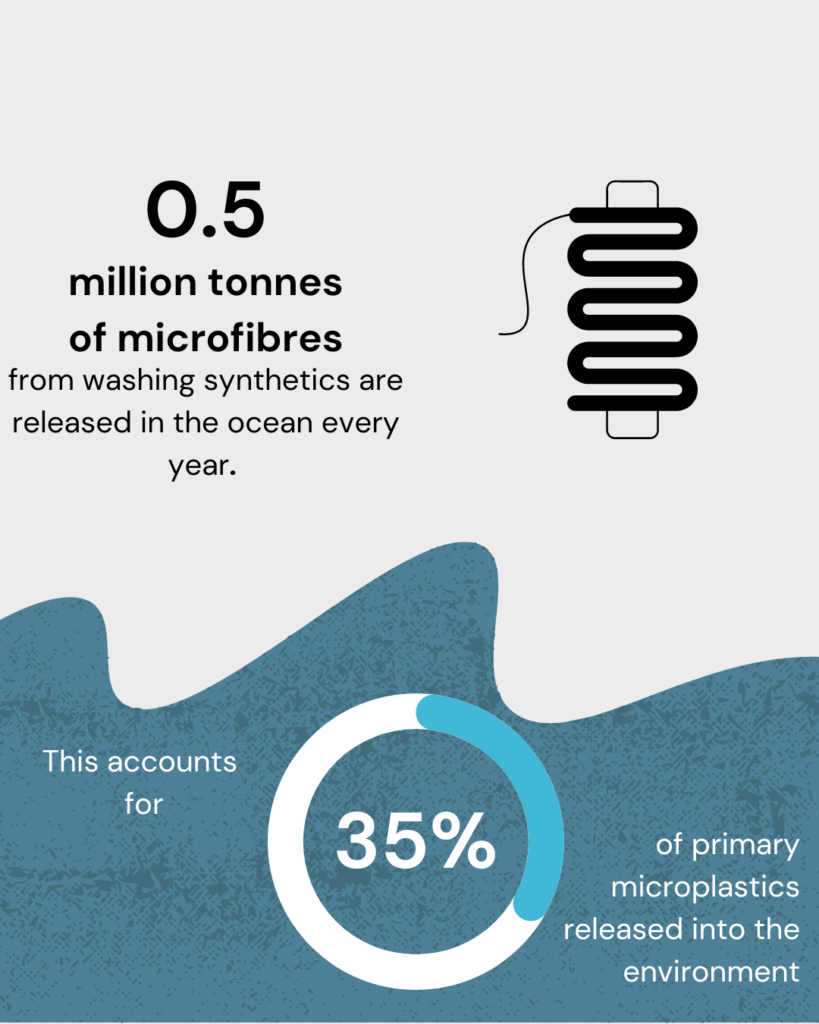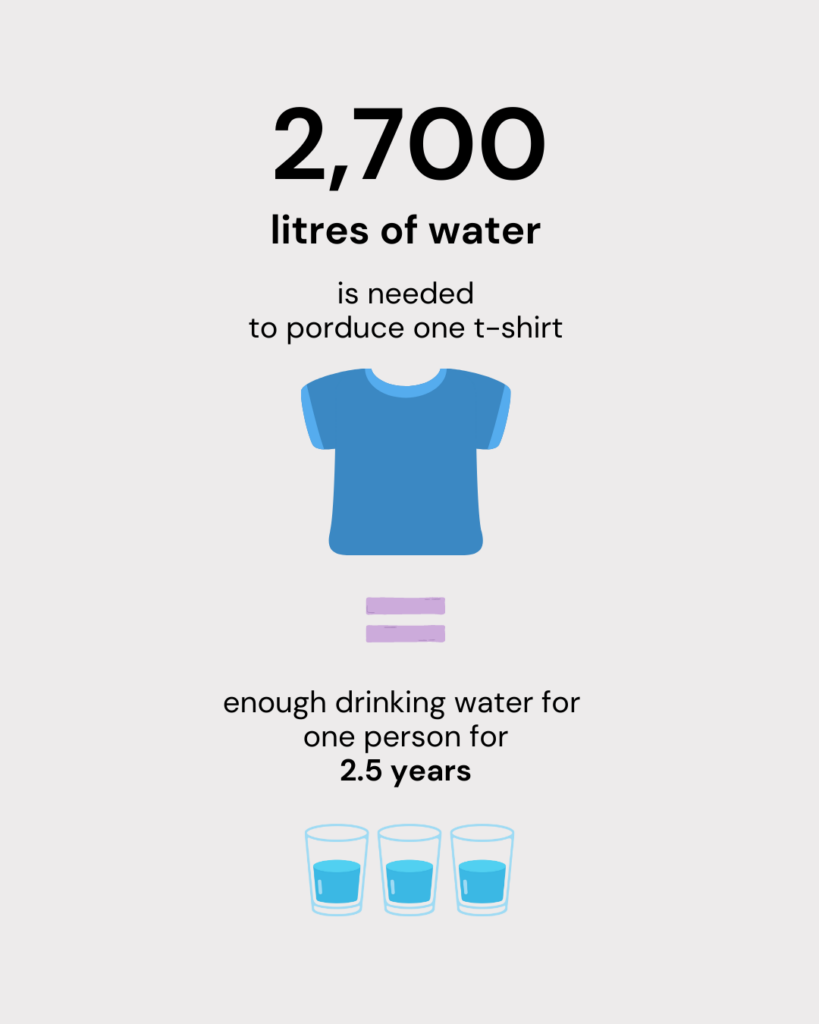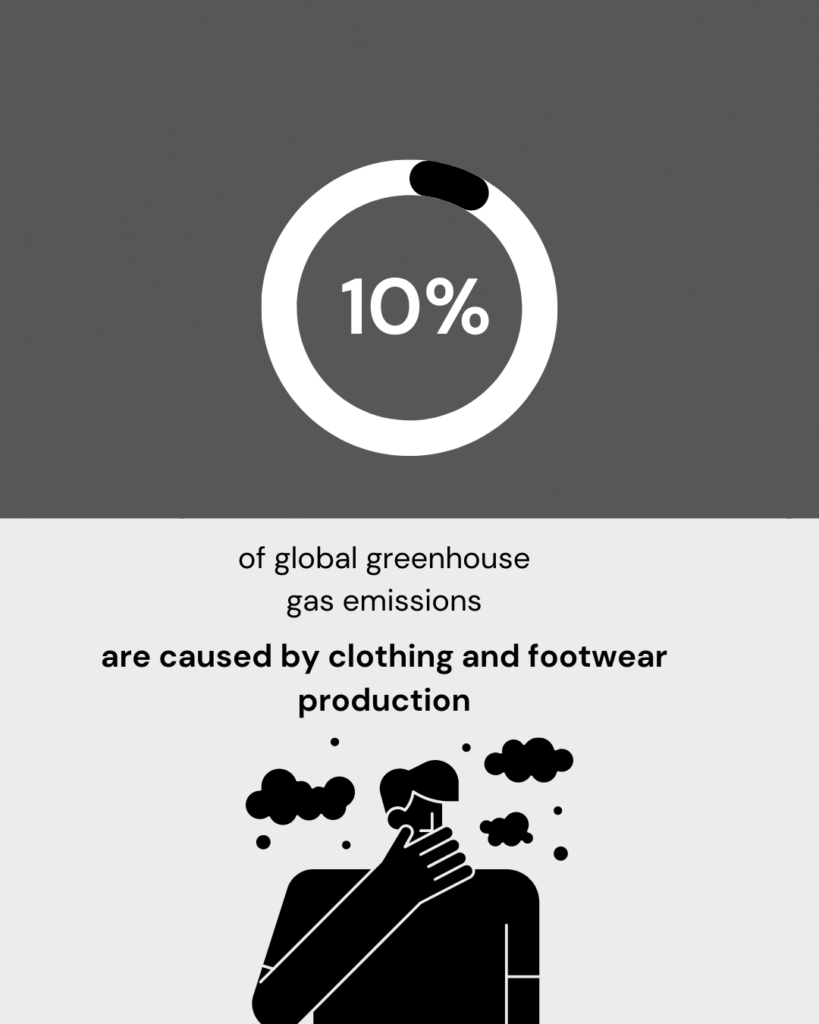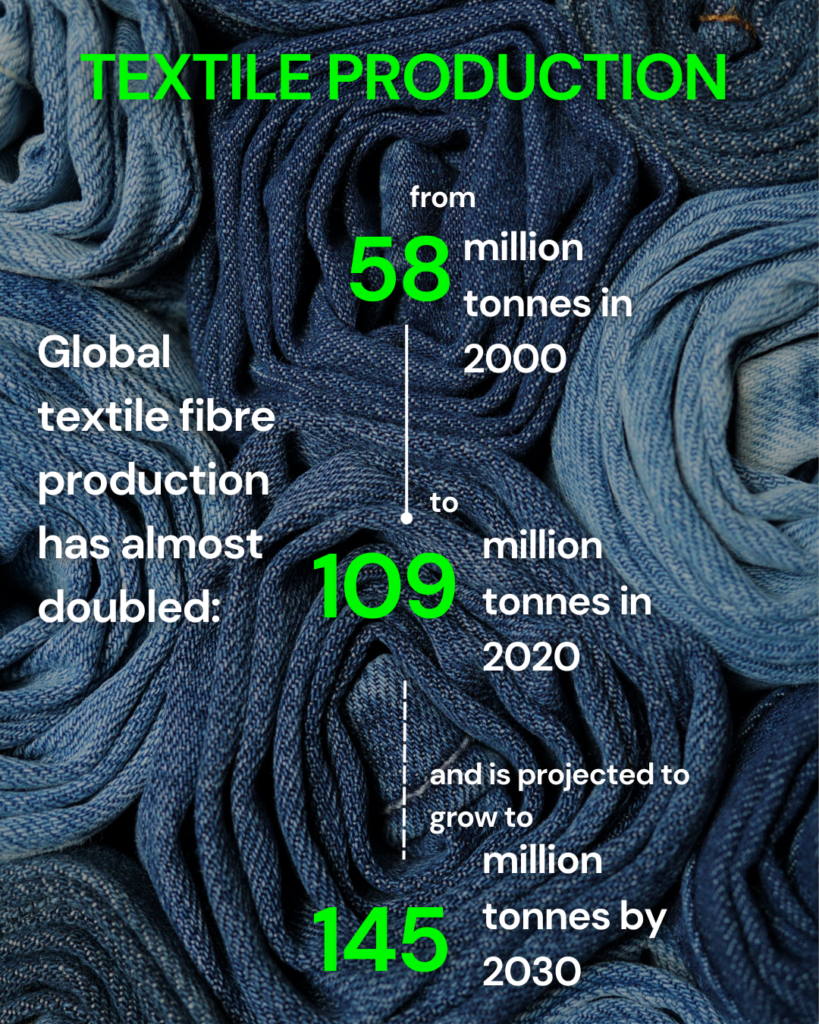
The era of textile pollution has had a significant impact on the environment.
The production and disposal of textile products have contributed to the release of greenhouse gasses and the depletion of natural resources.
The use of synthetic materials further exacerbates the problem, as they can take hundreds of years to decompose in landfill sites.
According to some studies the textile industry ranks second in the world for the rate of environmental pollution.
Every year with the passing of “fashions” our wardrobes are filled with meters and meters of clothing made with fabrics that are harmful to the environment and to our health.
Efforts to mitigate textile pollution include the adoption of sustainable production practices, textile recycling programs, and the use of natural fibers.
Consumers, on the other hand, can also play a role by choosing eco-friendly brands and disposing of clothing responsibly.
The term ‘’Textile Pollution’’
Textile pollution refers to the negative impact the textile industry has on the environment, particularly in terms of waste and pollution.
The process of creating fabric and textiles involves the use of harmful chemicals, dyes, and treatments that can result in pollution or contamination of water, land, and air.
In addition, the disposal of textile waste is a major contributor to environmental pollution, as synthetic materials can take hundreds of years to decompose.
Water Pollution

Textile industries contribute to water pollution through their discharge of untreated wastewater containing toxic chemicals, dyes, and heavy metals into water bodies.
The chemicals used in textile production can persist in the environment and harm aquatic life, posing a threat to human health as well.
Despite efforts to regulate and improve water management practices in the textile industry, pollution remains a significant environmental concern.
Let’s see some horrifying numbers:

Textile production is estimated to be responsible for about 20% of global clean water pollution from dyeing and finishing products.
Laundering synthetic clothes accounts for 35% of primary microplastics released into the environment.
A single laundry load of polyester clothes can discharge 700,000 microplastic fibers that can end up in the food chain.Washing synthetic products has caused more than 14 million tonnes of microplastics to accumulate on the bottom of the oceans.

Greenhouse Gas Emissions
The textile industry is responsible for significant greenhouse gas emissions, with estimates suggesting it is responsible for up to 10% of global carbon emissions.
The production of synthetic fibers such as polyester contributes heavily to emissions, as does the energy-intensive manufacturing and transportation process.
According to the European Environment Agency, textile purchases in the EU in 2020 generated about 270 kg of CO2 emissions per person.
That means textile products consumed in the EU generated greenhouse gas emissions of 121 million tonnes.
Specifically, air pollutants produced by the textile industry include:
- nitrous oxides and sulfur dioxide produced in the energy production stages;
- volatile organic components (VOCs) produced in coating, curing, drying, waste water treatment and chemical storage;
- aniline vapors, carrier Hydrogen sulfide, chlorine and chlorine dioxide produced in dyeing and bleaching stages.

Textile waste in landfills

The textile industry is one of the biggest culprits when it comes to generating waste.
From manufacturing to production and disposal, textile companies produce a significant amount of waste that ends up in landfills and waterways.
With the rise of fast fashion and consumerism, the textile industry is producing more clothing than ever before, leading to an increase in waste.
This waste includes fabrics, dyeing chemicals, and synthetic fibers that release harmful pollutants into the environment.
The accumulation of textile waste has far-reaching effects on the environment, human health, and animal life.
Less than half of used clothes are collected for reuse or recycling, and only 1% of used clothes are recycled into new clothes, since technologies that would enable clothes to be recycled into virgin fibers are only now starting to emerge.
Between 2000 and 2015, clothing production doubled, while the average use of an item of clothing has decreased.
Europeans use nearly 26 kilos of textiles and discard about 11 kilos of them every year.
Used clothes can be exported outside the EU, but are mostly (87%) incinerated or landfilled.

Taking into consideration all of the facts given above, we know for sure that the era of textile pollution is here.
But the truth is that we have the power to bring change!
All we have to do is just choose second-hand and place earth first!
#textile #pollution #greenhousegasemissions #environment
